Verbs of thought in 21st century literatura: Dante Medina
Verbs of thought in 21st century literatura: Dante Medina
Main Article Content
El lenguaje coloquial aumenta con expresiones, en su mayoría verbos de pensamiento. ¿Por qué pasó esto? Es precisamente el estudio de nuestro análisis: en los últimos dos siglos la pragmatización de las expresiones ha crecido desmesuradamente. En la literatura del siglo XXI, vemos cómo en América Latina se rompe una forma de decir las cosas con verdadero sentido semántico. En la literatura, los verbos que expresan procesos mentales representan nuevas realidades, sin que el vocabulario previamente existente sea minoritario. Los verbos de pensamiento más relevantes son adivinar, creer, idear, considerar, decidir, saber, recordar, preguntarse, darse cuenta, perdonar, entre otros. Nuestro análisis va dirigido a cuál es el uso actual que se consideraría correcto. Este estudio incluye los neologismos —verbos de pensamiento modernos— y el adecuado tratamiento del uso en el escritor mexicano Dante Medina. ¿Cómo y por qué el estudio de la pragmática en la literatura? La pragmática literaria probablemente utiliza el “adverbio de verosimilitud”, comunicación lingüísticamente correcta para designar las acciones como deben ser, es cuando entra la corriente filológica, y la representación de las incógnitas poéticas empieza a interesar con el uso de verbos de pensamiento. Aludimos en este estudio a que, junto a la semántica y la sintaxis, la pragmática conforma una cuadrilla que nos lleva a analizar la teoría semiótica de Medina aplicada al lenguaje de su literatura y verbos. Aprovechamos la pragmática Moderna que ofrece economía en el lenguaje: es lógica y precisa, para definir las distintas funciones que la semántica y la sintaxis tienen en los verbos del pensamiento para manifestar significados verdaderos.
Downloads
Article Details
Amoretti Hurtado, María, Revista de Filología y Lingüística de la Universidad de Costa Rica, “En el palabrario de Medina”, vol. 25, 1999, pp. 167-177.
Bohren, Anna, What is language Acquisition Theory? 3 Top theories of how we learn to communicate. From: https://blog.cognifit.com/language-acquisition-theory/
Cowan, H. (1965). SYNTAX. In Grammar of the Sentani Language: With Specimen Texts and Vocabulary (pp. 51-67). Brill. Retrieved June 28, 2022, from http://www.jstor.org/stable/10.1163/j.ctvbqs8jg.8 DOI: https://doi.org/10.1163/9789004286757_006
D. Malone, (2002), Theories and Research of Second Language Acquisition, MLE WS. Bangkok.
Dubois, Christophe, “Lingüísticas de la Creación de una ‘Lengua Nueva’ en las Niñoserías de Dante Medina”, journal El Occidental, Guadalajara, 1 de junio, 1991, p. 10.
Duchet, Claude, « Pour une socio-critique ou variations sur un incipit », Littérature, n°1, février 1971, p. 5-14. Online URL : https://www.persee.fr/doc/litt_0047-4800_1971_num_1_1_2495 DOI: https://doi.org/10.3406/litt.1971.2495
Epstein, R. (1991). Skinner, Creativity, and the problem of spontaneous behavior. Psychological Science, 2 (6), 362-370. Retrieved July 18, 2022 from http://www.jstor.org/stable/40062712 DOI: https://doi.org/10.1111/j.1467-9280.1991.tb00168.x
E. Schütz, Ricardo. Stephen Krashen’s Theory of Second Language Acquisition. From:https://www.sk.com.br/sk-krash-english.html#:~:text=According%20to%20Krashen%20there%20are,they%20acquire%20their%20first%20language.
Fromkin, Victoria, et al. An introduction to language. (2003). Seventh edition. Thompson Wadsworth.
Genesis 11 :1-9. The First Book of Moses, Called Genesis.
Hedeager, Ulla, Is language unique to the human species? Retrieved from: www.columbia.edu
Higginbotham, J. (1982). Noam Chomsky’s Linguistic Theory. Social Research, 49. (1), 143-157. Retrieved June 19, 2022, from http://www.jstor.org/stable/40970856
Kanjirakkat, J. (2014). Contextualising Language Studies: A Response. Economic and Political Weekly, 49(5), 75-77. Retrieved June 24, 2022, from http://www.jstor.org/stable/24479151
Lemetyinen, Henna, Language Acquisition, in 2012, from: https://www.simplypsychology.org/language.html#:~:text=Skinner%20argued%20that%20children%20learn,value%20of%20words%20and%20phrases.
McLeod, Saul. (2018). Jean Piaget’s Theory and Stages of Cognitive Development. Retrieved from: https://www.simplypsychology.org/piaget.html
Miller, G. (2020). Science Fiction and Psychology. Liverpool: Liverpool University Press. Retrieved from www.jstor.com
Moore, J. (2005). Some Historical and Conceptual Background to the Development of B.F. Skinner's "Radical Behaviorism" — Part 2. The Journal of Mind and Behavior, 26(1/2), 95-123. Retrieved June 1, 2022, from http://www.jstor.org/stable/43854054
Nguyen, Van Han, The relationship between language and gender: a case study in Vietnamese. Global Journal of Interdisciplinary Social Sciences, 2014. Global Institute for Research & Education.
Ostler, N. (2011). Language maintenance, shift, and endangerment. In R. Mesthrie (Ed.), The Cambridge Handbook of Sociolinguistics (315-334). New York: Cambridge University Press. DOI: https://doi.org/10.1017/CBO9780511997068.024
Parra, Marina. La hipótesis Sapir-Whorf. Deparment of Linguistics. National University of Colombia. Retrieved from: http://bdigital.unal.edu.co/30627/1/29488-105881-1-PB.pdf
Putnam, L., & Chomsky, N. (1994). An interview with Noam Chomsky. The Reading Teacher, 48 (4), 328-333. Retrieved July 19, 2022. From http://www.jstor.org/stable/20201430
Sturtevant, E. (1922). The Origin of Language. The Classical Weekly, 16(5), 34-38. doi:10.2307/4388384 DOI: https://doi.org/10.2307/4388384
Theories of language acquisition. Retrieved from: https://www.montsaye.northants.sch.uk/assets/Uploads/English-Language-Summer-Work-2.pdf
TRAN-Hoang-Thu, Gender and Language Use in the ESL Classroom, Alliant International University, San Diego, California.
Verriour, P. (1985). Drama, distance, and the Language Process. Language Arts, 62 (4), 385-390. Retrieved from www.jstor.com. Accessed June 10, 2022. DOI: https://doi.org/10.58680/la198525836
Vigors, Nicholas Aylward, (1827). The ancestry of Fenius Farsaid Fenius Farsaid. Dublin Institute of Advanced Studies.
Voxy, (2012). Do Animals have a language? Retrieved from: https://voxy.com/blog/2012/04/do-animals-havealanguage
Wilcox, S. (2001). Searching for Language: Process, Not Product. Sign Language Studies, 1 (4), 333-343. Retrieved from www.jstor.com. Accessed June 10, 2022. DOI: https://doi.org/10.1353/sls.2001.0021
Zavala, Lauro, Manual de Análisis Narrativo: literario, cinematografía, intertextual, ed. cit., p. 54.










